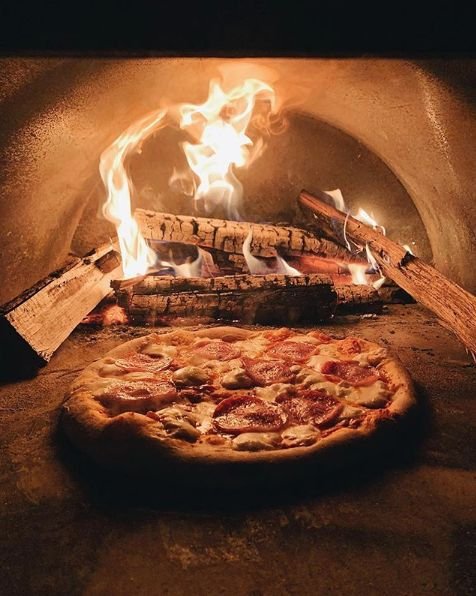The historical story of Pizza

Pizza’s been around for a while. The Greeks, Romans, and Egyptians all enjoyed flatbreads with toppings. People who couldn’t afford plates or who were on the go used pieces of flatbread topped with savories a quick and tasty meal as far back as antiquity. Virgil mentions Aeneas and his crew in the Aeneid eating “thin wheaten cakes as platters for their meal” while they are in Latium, which is where these early pizzas first appear. But Naples, in the Campania region of southwest Italy, is where pizza was first created in modern times. Naples, a Greek colony that was established approximately 600 B.C., was a bustling maritime city in the 1700s and early 1800s.

Naples had grown quickly to become one of the biggest towns in Europe under the Bourbon kings. It was technically its own kingdom, although it was well known for the large number of working poor that lived there. Its population grew from 200,000 in 1700 to 399,000 in 1748, propelled by trade with other countries and a continual influx of peasants from the countryside. More and more city residents were forced into poverty as the urban economy struggled to keep up. Because of how ragged they looked and how much they resembled Lazarus, the most despicable of these were known as lazzaroni. They required food that was quick and simple to eat because they were constantly rushing around looking for work. Pizza satiated this need. They would be cut to fit the customer’s budget or appetite when sold by street vendors rather than in stores while carrying enormous boxes under their arms.

Even though they resembled Virgil’s flatbreads in some ways, they were now distinguished by low-cost, simple-to-find ingredients that had a lot of taste. The simplest were just sprinkled with salt, fat, and garlic. Others, though, were basil, cecenielli (whitebait), and caciocavallo (a cheese made from horse’s milk). On some, there were even tomatoes. These were still considered to be a curiosity by modern gourmets, having only recently been imported from the Americas. However, what attracted people to them was their lack of popularity and consequently low price.

Pizzas were derided by food writers for a very long time as they were associated with the lazzaroni’s extreme poverty. Helstosky writes “judgemental Italian authors frequently called their eating practises ‘disgusting’.” Despite the fact that the progressive development in the lazzaroni’s standing had led to the appearance of the first pizza restaurants, even those who were dedicated to Neapolitan cuisine avoided mentioning it.
Italy became a unified country in 1861, and in 1889 Naples was visited by King Umberto I and Queen Margherita. According to legend, the travelling couple became dissatisfied with their consistent diet of French gourmet cuisine and requested a variety of pizzas from the city’s Pizzeria Brandi, the heir to the Da Pietro pizzeria, established in 1760. Pizza mozzarella, a pie topped with soft white cheese, red tomatoes, and green basil, was the flavour combination the queen preferred best. The legend claims that from that point forward, that particular topping arrangement became known as pizza Margherita. This indicated a

significant change. Pizza was raised by Margherita’s approval from a food only suitable for lazzaroni to something a royal family could eat, and it was converted from a regional delicacy into an authentic national dish. It established the idea that, like pasta and polenta, pizza was a distinctively Italian dish. However, pizza would not become widely popular in Italy outside of Naples until the 1940s.
The initial spur came from migration, which was across an ocean. A significant number of Neapolitans went north in pursuit of employment starting in the 1930s, bringing their food with them. In addition to Trenton, New Haven, Boston, Chicago, and St. Louis, immigrants from Naples were also making their dependable, crusty pizzas in other American cities such as New York. They weren’t trying to make a statement about food. Though it didn’t take long for non-Italians and non-Neapolitans to become intrigued by the tastes and aromas of pizza. The second World War accelerated this trend. When Allied troops invaded Italy in 1943–1944, they were so enamoured with the Campania-style pizza that they demanded it everywhere they went. But what really cemented pizza’s status as a truly Italian dish was tourism, which was made possible by the postwar decline in travel costs. The peninsula’s restaurants began to serve more regional specialties, such as pizza, as tourists’ interest in Italian cuisine grew. Italy saw a rapid expansion of pizza. New ingredients were added along the way as a result of changing consumer preferences and local tastes, as well as higher prices.

However, pizza found a second home in America. Italian immigrants had already reached the East Coast by the end of the 19th century, and the first pizzeria, Lombardi’s, debuted in New York City in 1905. Pizza soon became a staple of American culture. It immediately caught on among enterprising restaurateurs and spread across the nation in tandem with the accelerating pace of urbanisation. It was then modified to fit local tastes, identities, and demands. Ike Sewell, a Texan, opened a Chicago pizzeria shortly after the US entered World War II. In an effort to draw in more customers, he offered a much charming version of the dish, complete with a deeper, thicker crust and richer, more plentiful toppings. Around the same time, the Rocky Mountain Pie was born in Colorado. Its crust, which was intended to be consumed as a desert with honey, was much wider than its Chicago-based cousin but was not as deep. To the dismay of the Neapolitans, these were eventually even joined by a Hawaiian variation, topped with ham and pineapple.

As US economic and technological advancement accelerated starting in the 1950s, the pizza underwent even more profound changes. Noteworthy modifications include- The ‘domestication’ of pizza was the first. Fridges and freezers became more prevalent as disposable incomes increased, as did the need for “convenience” foods, which led to the invention of the frozen pizza. This necessitated alterations to the recipe because it was intended to be brought home and prepared whenever. To avoid the dough from drying out while baking, the base was now covered in a smooth tomato paste instead of being liberally strewn with tomato slices. Additionally, new cheeses had to be created to endure freezing. The ‘commercialisation’ of pizza was the second development. Pizza was one of the first foods served up as the availability of vehicles and motorcycles increased, making it possible

to deliver freshly prepared meals to customers’ doors. Tom and James Monaghan started ‘Dominik’s’ in Michigan in 1960, and after establishing a reputation for quick delivery, they expanded their business nationwide under the name ‘Domino’s. There is now hardly a city in the entire world where they cannot be found as a result of their international expansion and that of their rivals. These modifications had the paradoxical consequence of increasing standardization while also increasing variance in pizza. While the basic structure of the pizza—a dough base with thin layers of tomato and cheese on top—became more firmly established, the desire of consumers for novelty prompted the development of ever-more elaborate varieties.

The pizzas of today are very different from the lazzaroni, and many pizza purists, particularly in Naples, object to some of the more bizarre toppings that are now available. Pizza is actually the favourite food of most people, despite having roots that reach back to ancient Greece, via Italy, and to the rest of the world. Every slice contains a thorough history of the various regions of the world. The goodness of pizza is infused with social, economic, and cultural marks.
The toppings have evolved throughout time to reflect the various global cultures. The fundamentals remain the same despite the fact that bakers from all over the world now create personalized pizza. The crust is what keeps an excellent pizza together.


